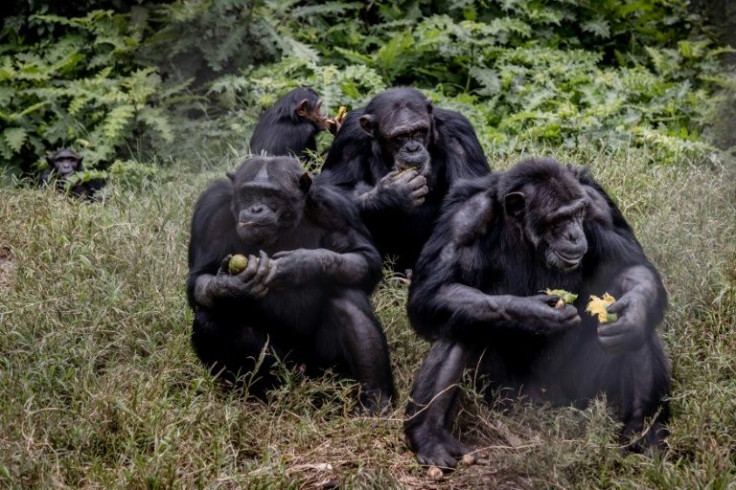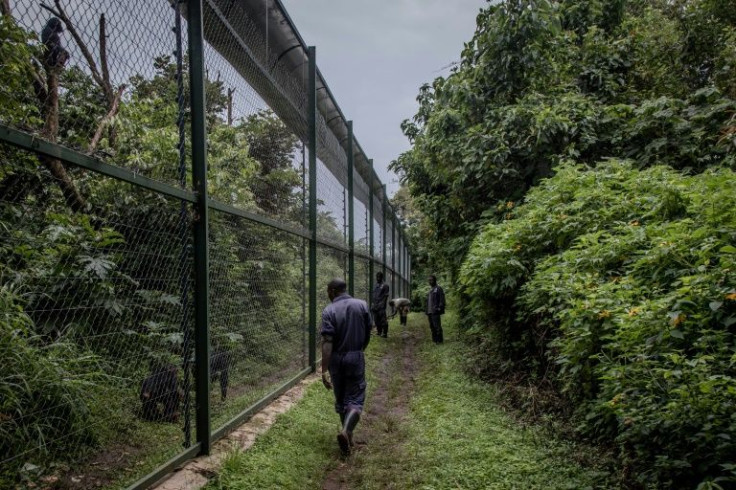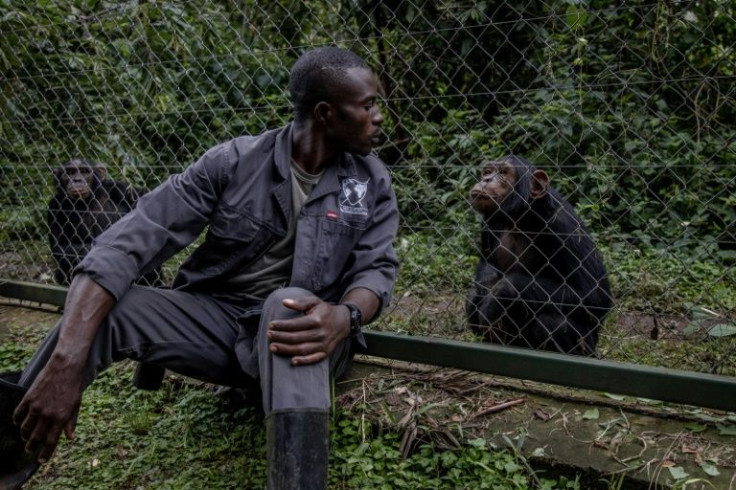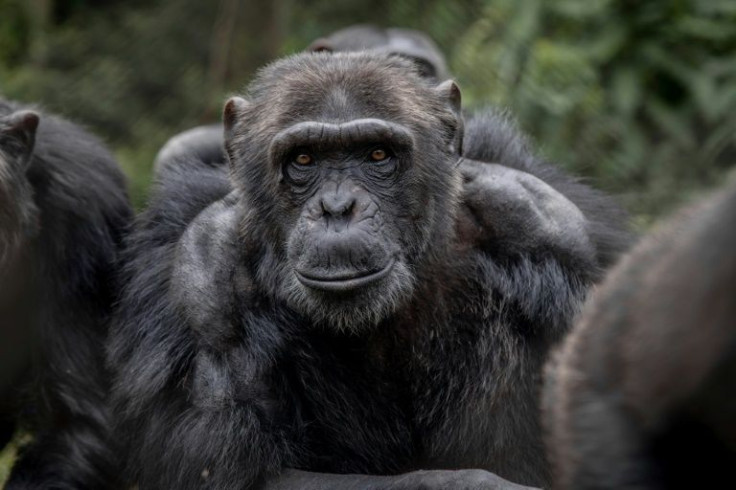Shelter For Traumatised Apes In DR Congo's Strife-torn East
Beyond the reach of bloody conflicts in eastern Democratic Republic of Congo, rescued apes swing from one branch to another under the leafy canopy at a wildlife sanctuary.
On the edge of a national park that is home to endangered gorillas, the Lwiro Ape Rehabilitation Centre (CRPL) has for two decades nursed wounded and traumatised animals to recovery and taken in orphans.

The centre houses scores of chimpanzees, gorillas and bonobos among its wards, often saved from poachers in a region where illegal activities go largely unchallenged in the insecurity caused by many armed groups.
During a recent visit, half a dozen apes gathered behind a fence to choose the best banana to peel and eat after a fresh food delivery.
Female chimpanzees walked around, carrying their babies on their backs.

Each of the 110 chimpanzees at the sanctuary in South Kivu province eats six kilogrames (13.2 pounds) of fruit, cereals and vegetables a day, its staff say. The infants are bottle-fed.
"These orphaned baby chimps are coming to us because of insecurity and war," centre manager Sylvestre Libaku said, urging the government to secure the region to "let the animals live peacefully in their natural habitat".

Weeks or even months of effort are needed to stabilise an animal in its new home. Tarzan, a chimpanzee collected last June in Bunia in the troubled Ituri province to the north, still lives in quarantine.

The ape has unhealed wounds on his skull, but "is doing better. The hair is starting to grow [but] he is still kept in his cage, waiting for him to be able to mix with the others", Libaku said.
However, Byaombe, another injured chimpanzee picked up more than a year ago, is a source of worry. The animal receives care every day but "without success -- its future is not reassuring", he said.
In his laboratory, Damien Muhugura handles samples taken from sick animals.
"We do parasitological analyses to search for intestinal worms, for example," among other bacteriological and biochemical risks, he explained.
The facility extends over four hectares (almost 10 acres) inside the Kahuzi-Biega National Park, named after two extinct volcanoes and listed as a UN World Heritage Site.
Animals brought in from large forests where they roamed freely "feel trapped" on the small territory, said Assumani Martin, a veterinarian for the CRPL.
In November 2020, 39 grey parrots were released into the Kahuzi-Biega forest, after a stay for adaptation at the Lwiro facility, founded in 2002 by the Congolese Institute for the Conservation of Nature and the Centre for Research in Natural Sciences.
Since then, no animals have been introduced to the reserve because of the insecurity in and around the protected domain, Libaku says.
UNESCO describes the park as "one of the ecologically richest regions of Africa and worldwide", but it is also one of 52 sites on the World Heritage endangered list for the planet.
© Copyright AFP 2024. All rights reserved.





















